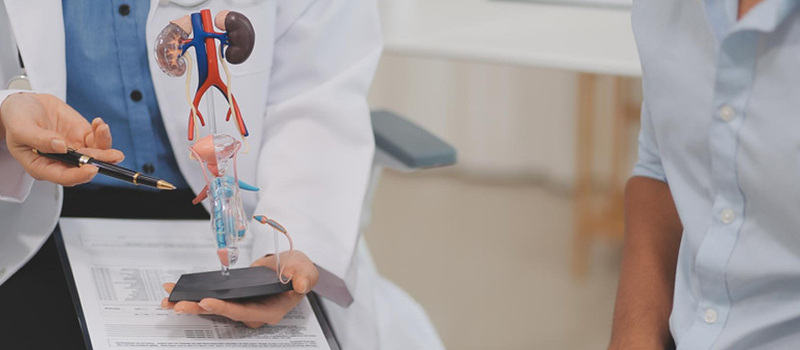
The cancer of the testicles is a rare type of cancer. It can affect men at all ages, but is predominantly seen in the age group between 15 and 45 years. Testicles are responsible for sperm production and hormone testosterone. Malignancy of the testicles is one of the most curable types of cancers. Early testicular cancer diagnosis and detection improve prognosis significantly. A thorough understanding of the diagnostic processes is crucial. This step-by-step guide helps understand all about essential testicular cancer tests and diagnostic procedures.
The first step starts with self-awareness. If you come across a lump, a swelling, or discomfort in the testicles during self-check, you may need to proceed to the next step.
On discovering any symptom, your next step should be to consult with a healthcare provider. The earlier you go for the consultation, the better it is, as it leads to a timely diagnosis and treatment.
The next step involves a thorough physical examination by a licensed or qualified urologist. The doctor will check for abnormalities, including the scrotum and palpation of the testicles. Depending on the result, the next step is decided.
Blood tests are advised at this stage. These tests measure the levels of certain proteins. These proteins are known as tumour markers. These markers help identify indications of the presence of testicular cancer.
These markers include -
Testicular ultrasound procedures involve non-invasive imaging techniques to assess the spread of cancer cells. They use high-frequency sound waves to show intricately detailed images of the testicles and scrotum.
A gel is first applied to the scrotal area. A handheld transducer is moved over the area. This is a painless, radiation-free technique and does not take more than 15 to 30 minutes. In testicular cancer diagnosis, the procedure helps doctors understand if the tumour is benign or malignant, and identify different benign conditions, including epididymal cysts and also likely malignancies.
This is the first imaging test done when an abnormality in the testicular region is detected.
Besides, blood tests for tumour markers and ultrasound imaging, imaging scans like CT scans and X-rays are also conducted to understand the extent of cancer spread. CT scans are conducted as they offer detailed images of the abdomen, chest, and pelvis, helping doctors detect metastasis. X-rays, on the other hand, helps assess the chest to determine if there is any potential lung involvement.
In case the testicular cancer diagnosis indicates cancer, definitive diagnostic procedures are carried out to remove the cancerous testicle, also called inguinal orchiectomy. This tumour or tissue is then histologically examined the detect the type and presence of cancer.
After the testicular cancer diagnosis, and treatment, patients are required to visit the healthcare provider regularly. The doctor will physically examine the patient every time. Blood tests for tumour markers are advised followed by imaging scans. This is done to detect and monitor recurrence and also for treatment management of the disease on a long-term basis.
The thorough understanding of testicular cancer diagnosis helps individuals take informed decisions. Self-examination is the most crucial step in the process as it helps in early detection. The faster patients follow up with prompt medical evaluation, the better the chances of enhancing treatment outcomes.